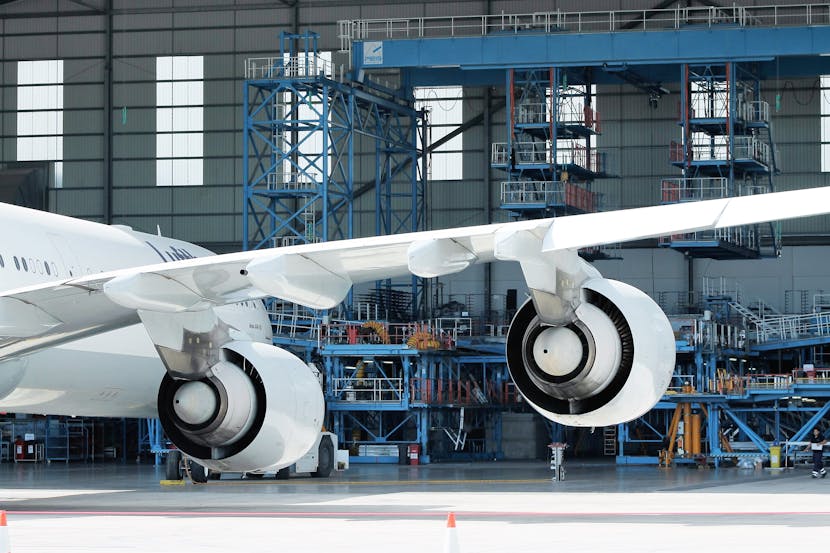Tuesday, April 16, 2024

Dubai International Airport (DXB), one of the busiest hubs in the world, faced a significant disruption as extreme flooding, caused by an unusual heavy rainfall, led to the pause of arriving flights. This rare weather event highlights the challenges airports and cities face due to unexpected climate patterns and the cascading effects on global travel.
Unprecedented Rainfall in Dubai
Over the past 24 hours, Dubai has recorded an astonishing 4.7 inches (119 mm) of rain, equivalent to one and a half years of the city’s average rainfall. This deluge, unexpected in a region characterized by its arid climate, resulted in severe flooding, especially in low-lying areas and critical infrastructure points like Dubai International Airport.
The intensity of the rainstorm forced the airport authorities to suspend arriving flights temporarily, although departing flights resumed after a brief pause of 25 minutes earlier in the day due to the storm’s peak. The operational pause impacted 21 departures and 24 arrivals, with the disruption affecting flights to and from various global destinations, particularly those in the Middle East and Indian Subcontinent.
Impact on Air Travel and Passengers
Among the cancellations were flights from key regional hubs including Bahrain, Kuwait City, Islamabad, and Moscow. The affected departures included flights to Vienna, Mumbai, Riyadh, and Colombo. Airlines like Emirates, Kuwait Airways, Pakistan International Airlines, IndiGo, Saudia, and flydubai were forced to cancel flights, leaving passengers stranded or delayed.
Social media platforms were flooded with images and videos showing the extent of the flooding, with water inundating the tarmac and affecting ground operations. Passengers faced significant inconvenience, and the airport advised travelers to check their flight status regularly and allow extra time for travel to and from the airport.
Response and Measures
In response to the flooding, the Dubai Metro extended its operating hours until 3 AM to accommodate stranded passengers and facilitate easier movement around the city. The extraordinary measures underscored the severity of the situation and the swift response required by city and transportation authorities to mitigate the impacts of the flooding.
Dubai’s infrastructure, while designed to handle large volumes of traffic and tourists, is not typically equipped to deal with such high levels of precipitation in a short period. This event has prompted discussions on the need for improved drainage and emergency preparedness systems, particularly in light of changing global weather patterns.
Broader Regional Effects
The flooding in Dubai was part of a broader pattern of extreme weather affecting the region. Nearby Abu Dhabi also experienced flash flooding, although its international airport did not face the same level of disruption. In Oman, the heavy rains were even more devastating, resulting in 18 fatalities over recent days due to the severe weather.
These incidents across the Gulf region highlight the increasing frequency and intensity of extreme weather events, posing new challenges for cities that are not typically prone to such conditions. The economic and human impacts are significant, necessitating a reassessment of urban planning and disaster response strategies.
Future Implications for Travel and Infrastructure
The flooding at Dubai International Airport serves as a wake-up call for infrastructure resilience in urban areas prone to sudden natural events. For the aviation industry, it highlights the need for robust contingency planning to handle unexpected disruptions, ensuring minimal impact on global travel networks.
As climate unpredictability becomes more common, airports and airlines will need to invest more in adaptive measures to handle a range of environmental scenarios. Similarly, passengers might need to plan for potential disruptions, particularly when traveling to or from regions experiencing unusual weather patterns.
The extreme flooding at Dubai International Airport is more than a temporary travel disruption; it is indicative of the broader challenges faced by global travel infrastructure in the age of climate change. It underscores the importance of enhancing the resilience of critical systems and the need for rapid response capabilities to safeguard against the escalating risks posed by extreme weather events. As the situation stabilizes, the focus will inevitably shift towards learning from these incidents to better prepare for future challenges.
Tuesday, April 30, 2024
Tuesday, April 30, 2024
Tuesday, April 30, 2024
Tuesday, April 30, 2024
Tuesday, April 30, 2024
Tuesday, April 30, 2024
Tuesday, April 30, 2024